Welcome to a comprehensive exploration of what do Japanese eat for breakfast. If you’ve ever wondered how mornings in Japan begin, you’re in the right place. Within the first few bites, you’ll discover a tapestry of flavors and traditions that set a refreshing tone for the rest of the day. Whether you’re a curious foodie, a traveler gearing up for a trip to Japan, or simply looking for new breakfast ideas, understanding the essence of Japanese breakfast recipes can spice up your mornings.
In this article, we’ll delve into the distinctive elements that shape a typical Japanese breakfast, including the use of steamed rice, savory soups, and nutrient-rich side dishes. We’ll also unveil some history behind this culinary tradition and share practical examples you can try at home. Get ready to explore a cultural staple that’s both delicious and nutritious. Let’s begin!
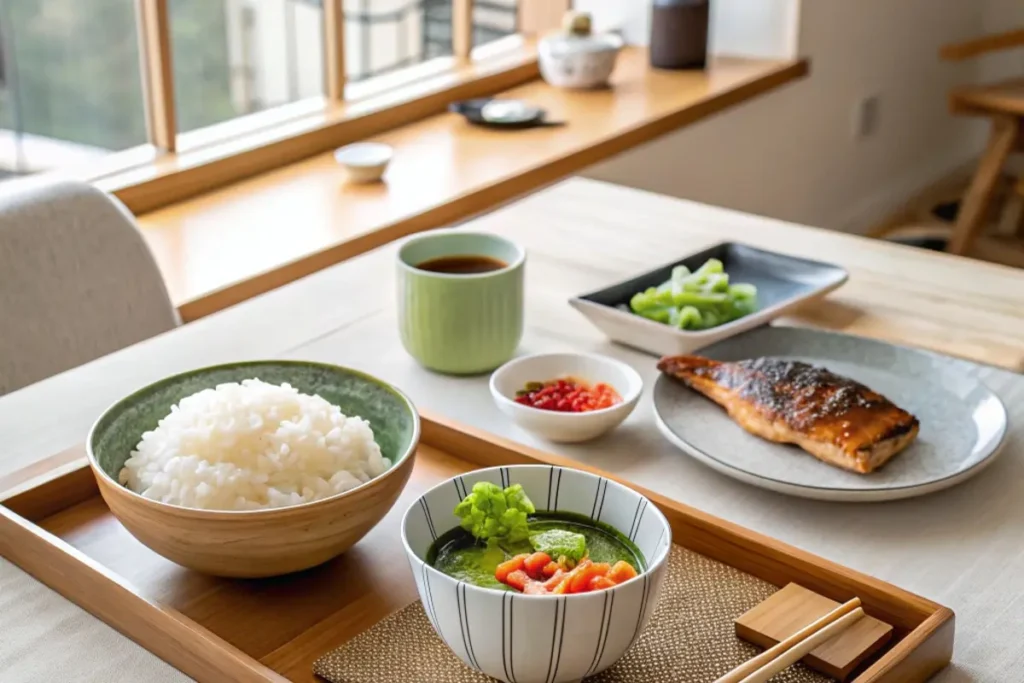
The Building Blocks of a Typical Japanese Breakfast
A typical Japanese breakfast revolves around a harmonious balance of flavors, nutrients, and presentation. At its core, you’ll find three important components:
- Steamed Rice (Gohan): Rice is the heart of any Japanese meal. For breakfast, short-grain white rice is usually served plain, allowing it to blend beautifully with other dishes. In many households, rice is prepared fresh or warmed in a rice cooker, making it the staple carbohydrate to kickstart the day.
- Soup (Miso Soup or Other Variations): Next is soup, most commonly miso soup. It is prepared from dashi (a simple broth made from kelp and bonito flakes) and mixed with miso paste. Tofu cubes, wakame seaweed, and sliced green onions frequently appear as garnishes. Sometimes, families might opt for clear soup or a vegetable-based soup, but miso remains the most classic choice.
- Side Dishes (Okazu): Here’s where variety shines. Protein usually comes from grilled fish such as salmon or mackerel, or occasionally from eggs—often in a rolled omelet known as tamagoyaki. Pickled vegetables, known as tsukemono, add tangy brightness. Seasonal fresh vegetables might also appear, along with items like natto (fermented soybeans) for an extra punch of nutrition.
These components work in synergy, providing essential nutrients—carbohydrates from rice, proteins from fish and eggs, and vitamins from vegetables. The delicate preparation and plating are also reflective of Japanese traditional breakfast culture, emphasizing mindfulness and respect for ingredients. This interplay of taste and nutrition explains why many consider the morning meal in Japan both delicious and well-balanced.
For a closer look into the intricate details of a typical breakfast in Japan, you can explore our Traditional Japanese Breakfast post, which dives even deeper into regional variations and serving suggestions. This foundation sets the stage for you to appreciate the historical context and practical ways to bring Japanese breakfast food to your own kitchen.
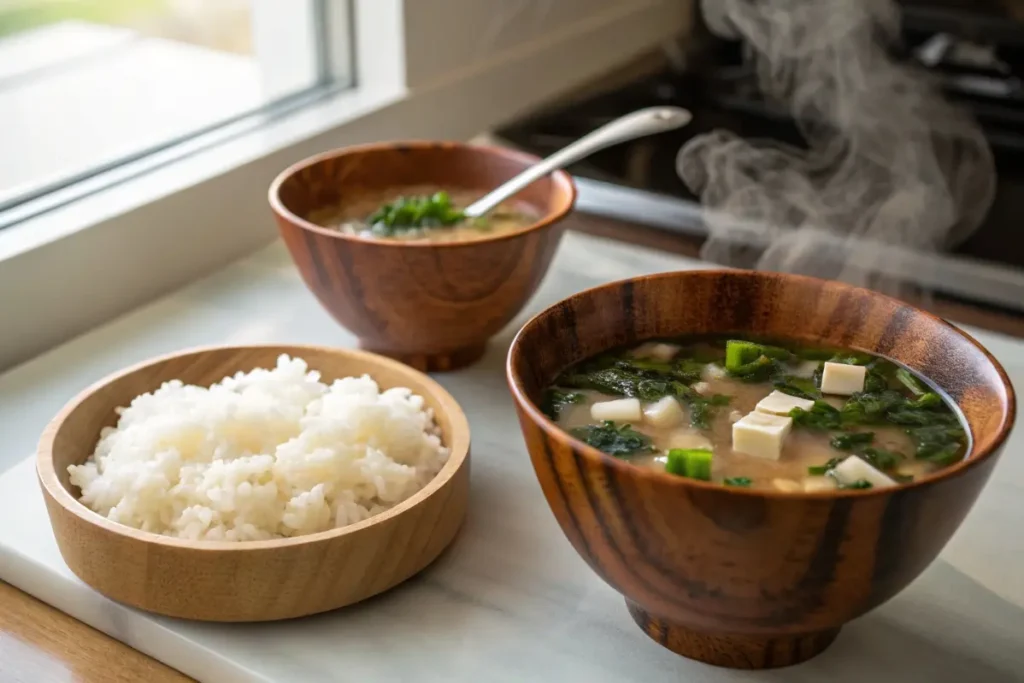
Popular Variations in Japanese Breakfast Staples
While the classic trio of rice, soup, and side dishes forms the backbone of what do Japanese people eat for breakfast, there are plenty of regional and modern twists. Over time, Japan’s culinary landscape has evolved, blending tradition with contemporary flavors.
- Grilled Fish vs. Western-Influenced Options: Although grilled fish is traditional, some Japanese families opt for bread or toast in the morning, reflecting Western culinary influences. These slices are often paired with jam, butter, or eggs, creating a hybrid Japanese-Western breakfast.
- Egg Preparations: Wondering if Japanese people eat eggs for breakfast? Absolutely. Tamagoyaki (a sweet rolled omelet) is a longtime favorite. However, scrambled eggs and sunny-side-ups are not unusual either, especially in more Westernized households. Eggs add a rich source of protein, giving an energizing boost for the day.
- On-the-Go Convenience: For a quick bite, convenience stores (konbini) offer rice balls (onigiri) stuffed with flavors like salmon, tuna mayo, or pickled plum. Grab-and-go sandwiches, often featuring egg salad or tonkatsu (pork cutlet), are also popular among busy workers.
- Hearty Soups and Stews: Especially in colder months, families might enjoy more substantial soups like tonjiru (pork and vegetable miso soup) or oden (various ingredients simmered in light dashi). These additions provide extra warmth and nourishment, reflecting a seasonal approach to breakfast.
- Green Tea and Beyond: You might ask, What do Japanese drink for breakfast? Green tea is a mainstay, valued for its refreshing taste and health benefits. However, coffee is increasingly common, and many younger generations enjoy it alongside toast or pastries. Some also opt for hojicha (roasted green tea) or barley tea for variety.
If you’re seeking more recipe ideas to expand your morning meal options, don’t miss our curated Common Japanese Breakfast Foods collection. You’ll find everything from simple rice ball flavors to fusion-style concoctions that incorporate both Eastern and Western elements.
Health Benefits and Nutritional Insights
Many people wonder, Why is Japanese breakfast so healthy? The answer lies in the balanced composition of foods and portion control. By mixing carbohydrates, proteins, and a variety of vitamins and minerals, a Japanese breakfast food ensures you start the day with well-rounded nourishment.
- Balanced Macronutrients: At the heart of a Japanese traditional breakfast is a harmonious ratio of macronutrients. Rice delivers complex carbohydrates, fish or eggs deliver protein, and miso soup offers a balance of protein and healthy fats. This combination helps maintain stable energy levels throughout the morning.
- Gut Health via Fermented Foods: Japan is famous for its fermented items such as miso paste, pickled vegetables, and natto. These probiotic-rich foods can promote digestive health and strengthen the immune system. Such fermentation traditions often date back hundreds of years, contributing to the longevity of Japanese communities.
- Low in Processed Sugars: Sweet pastries or sugary cereals are less common in a typical breakfast in Japan. Instead, natural sweetness comes from ingredients like sweet potatoes, fruits, or the subtle sweetness of tamagoyaki. This approach helps keep sugar intake under control, supporting better long-term health.
- Portion Consciousness: Another critical aspect is portion size. Japanese cuisine emphasizes mindfulness and moderation. Each dish is served in small bowls, encouraging you to enjoy your meal slowly and appreciate each flavor. This cultural norm can lead to a reduced calorie intake compared to Western breakfasts.
- Nutrient-Dense Side Dishes: Beyond rice and fish, the array of pickled vegetables, seaweeds, and tofu dishes add essential vitamins, minerals, and fiber. These micronutrients are vital for daily functions, including cell repair, digestion, and mental clarity.
Ready to craft your own nutritious Japanese-style breakfasts? Check out our Modern Japanese Breakfast article to explore contemporary meal ideas that blend tradition with modern health science. You’ll get a full spectrum of tips on portion sizes, nutrient-rich ingredients, and cooking methods.
The Role of Seasonality in Japanese Breakfast
Japanese cuisine, including breakfast, is deeply rooted in seasonal eating. This philosophy ensures that what do Japanese eat for breakfast changes subtly throughout the year, making it both exciting and nutritionally beneficial.
- Spring Delights: As cherry blossoms bloom, light and fresh vegetables take center stage. Dishes like bamboo shoots and nanohana (rapeseed blossoms) add bursts of green to the morning meal. Pickles made from fresh radishes or cucumbers are also common.
- Summer Refreshments: To combat the heat, breakfasts often feature chilled tofu, cold barley tea, and refreshing side dishes like chilled tomato slices or salted cucumber. Rice can be served at room temperature, and grilled fish might be replaced with lighter fare such as grilled squid or shrimp.
- Autumn Harvest: Autumn is the season of abundance. Sweet potatoes, chestnuts, and mushrooms appear prominently. Miso soup may include hearty ingredients like pumpkin or taro. Grilled fish like salmon is at its richest flavor during these months, making it a seasonal favorite.
- Winter Warmth: During the colder season, many families incorporate comforting soups like oden or tonjiru. Pickles shift to longer-fermented varieties such as nukazuke (rice bran-fermented vegetables). In northern regions, smoked or preserved fish becomes a breakfast staple, ensuring access to protein even when fresh produce is scarce.
- Cultural Celebrations: Throughout the year, various festivals and holidays also influence breakfast choices. For example, osechi ryori is a traditional New Year’s feast offering a range of small, beautifully arranged dishes. While it’s typically enjoyed throughout the New Year period, some items might appear in everyday breakfasts as well.
Want to explore how seasonality shapes other aspects of Japanese cuisine? Feel free to Discover Japanese Recipes that celebrate every season. By embracing seasonal produce, you not only make your breakfasts more diverse and flavorful but also support sustainable farming and local traditions.
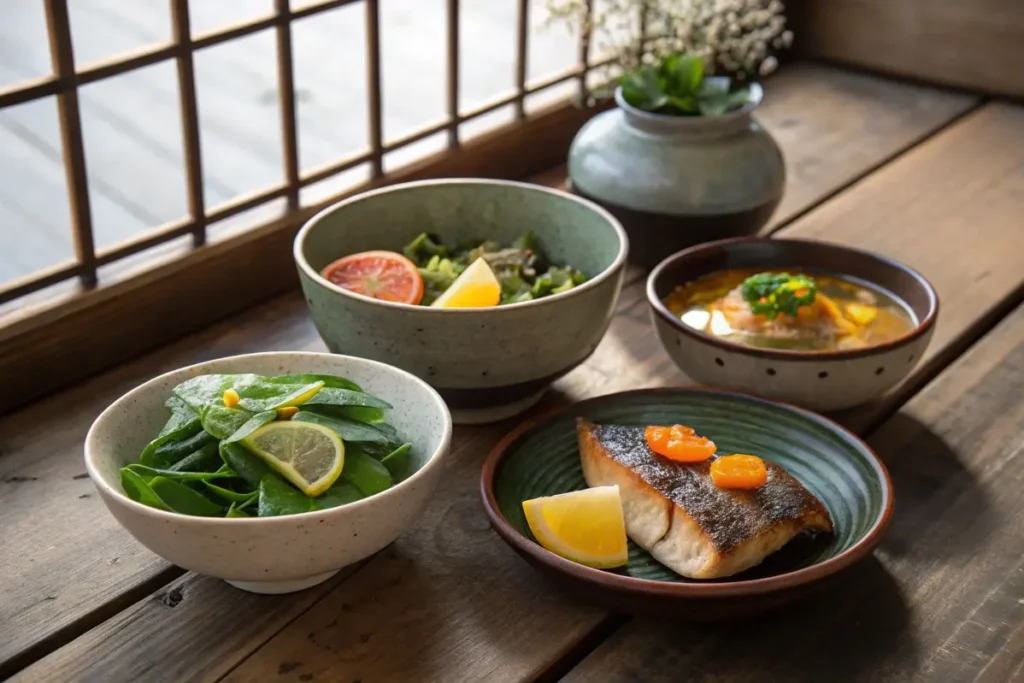
Adapting Japanese Breakfast for International Kitchens
If you’re intrigued by japanese breakfast recipes but worry about sourcing specific ingredients, fear not. You can recreate the essence of Japanese mornings in your own kitchen, no matter where you live.
- Ingredient Substitutions: Can’t find certain types of fish? Try salmon, mackerel, or even trout as a replacement. If miso paste seems rare, search Asian grocery stores or online marketplaces. For pickled vegetables, experiment with homemade quick-pickling methods using vinegar, salt, and your favorite veggies.
- Equipment Essentials: A rice cooker simplifies breakfast prep, keeping rice warm and ready at any hour. If you don’t have a rice cooker, stovetop methods work just as well; just be sure to monitor the water-to-rice ratio and cooking time. A small grill pan or fish grill can replicate Japanese grilling techniques.
- Health-Conscious Twists: If you’re cutting back on sodium, opt for a lower-sodium miso paste. Substitute white rice with brown rice or mixed grains for extra fiber. Similarly, experiment with baked or air-fried fish instead of pan-frying to reduce oil consumption.
- Fusion Ideas: Japan is no stranger to global influences—so why not infuse your breakfast with a personal touch? Combine tamagoyaki with Western herbs, or top your rice bowl with avocado slices for a “Japa-Mex” spin. Explore different condiments and textures to tailor dishes to your palate.
- Serving and Presentation: Part of the allure of Japanese traditional breakfast lies in the presentation. Arrange foods in small bowls or plates, each showcasing a distinct flavor. This practice naturally encourages mindful eating. Incorporate chopsticks if you like, or use your usual utensils—whatever helps you enjoy the meal more fully.
For step-by-step walkthroughs, head over to our Breakfast in Japanese guide. From easy, everyday instructions to advanced techniques, this resource helps bridge the gap between Japanese authenticity and international convenience.
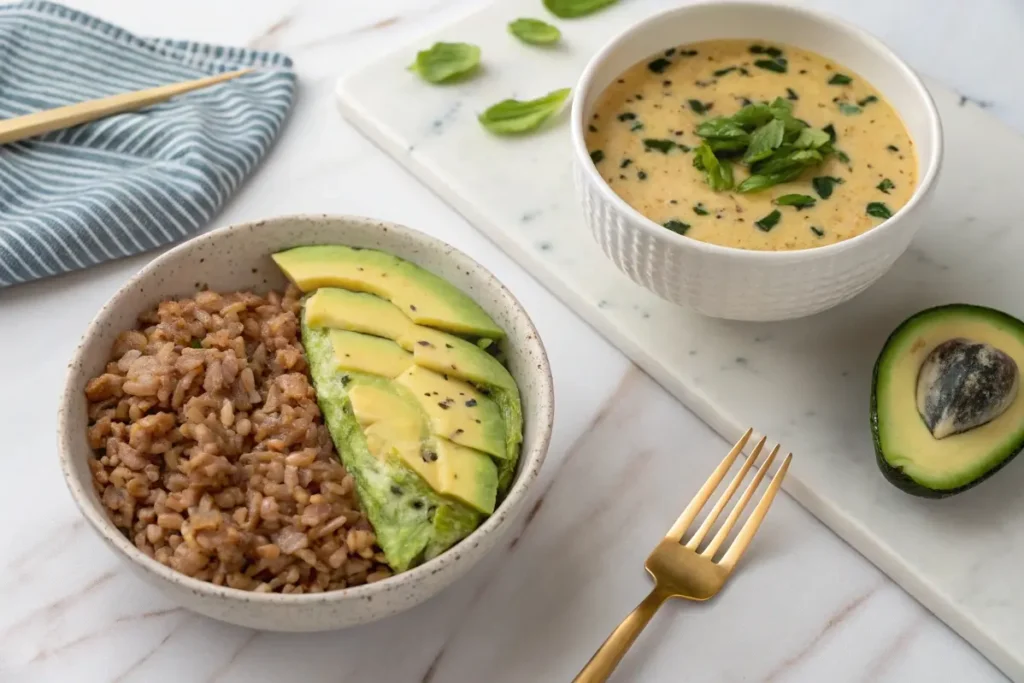
History/Context of Japanese Breakfast
Although the question what do Japanese eat for breakfast points to present-day habits, the roots of Japanese morning meals stretch back centuries. Traditional Japanese cuisine, or washoku, became more standardized during the Edo period (1603–1868). The concept of a balanced meal—rice as a staple, soup as a complement, and side dishes for variety—was firmly cemented during these years.
Influence of Zen Buddhism: Monks historically adhered to strict dietary rules, emphasizing simplicity and balance. This philosophy influenced the broader culture, promoting the idea that food should nourish the body and mind while minimizing waste. As a result, breakfast routines in Japan came to reflect mindful eating and portion control.
Transition Through Eras:
- Edo Period: Most commoners would eat rice or millet porridge in the morning, possibly accompanied by pickles or miso soup. Fish was more available in coastal regions, while inland areas relied on preserved or salted fish.
- Meiji Restoration (1868–1912): With the introduction of Western ideas, bread and coffee began appearing in some Japanese households. The royal court and wealthy families started experimenting with foreign dishes, signaling a shift from a purely traditional breakfast.
- Post-World War II (1945–1960s): Economic changes allowed more households to access a variety of foods. Though the classic trio—rice, soup, and pickles—remained dominant, urban families started to incorporate Western breakfast items like toast and eggs more frequently.
- Modern Era: Japan’s global influence increased, and so did its openness to international cuisines. Convenience became a priority for many. Convenience stores launched quick breakfast solutions like onigiri and ready-made miso soup packs, making it easier for busy workers to have a meal on the go.
Cultural Symbolism: Beyond mere sustenance, breakfast in Japan symbolizes hospitality and attention to detail. Traditional inns (ryokan) often serve elaborate morning meals showcasing local, seasonal ingredients. These meals are served in lacquerware and ceramic dishes that highlight regional craftsmanship.
Current Landscape: Nowadays, you’ll find a wide spectrum—from meticulously prepared traditional breakfasts to fusion styles reflecting Western, Chinese, or Korean influences. Yet, at its core, the emphasis on freshness, seasonality, and balanced nutrition remains. Families continue to pass down recipes and cooking techniques, preserving the essence of Japanese traditional breakfast for future generations.
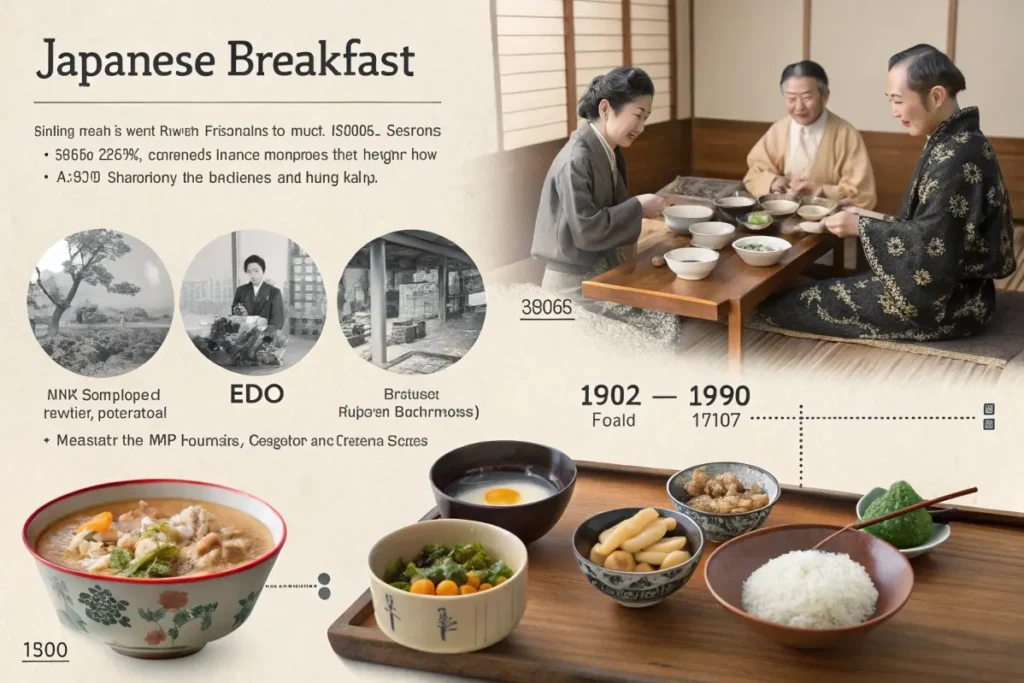
Practical Examples/Use Cases
If you’re curious about replicating typical breakfast in Japan at home, here are some practical examples. These use cases range from quick and simple to more elaborate spreads worthy of a weekend brunch.
- Quick Weekday Meal (15 Minutes):
- Rice Ball & Miso Soup: Prep onigiri (rice balls) the night before using salmon flakes or pickled plum for filling. Warm up instant miso soup in the morning. Add some quick pickled cucumbers for a crunchy side.
- Why It Works: Minimal cooking is required, and the components offer protein, carbohydrates, and essential vitamins.
- Weekend Spread (30–45 Minutes):
- Grilled Fish & Tamagoyaki: Marinate salmon in soy sauce overnight. In the morning, grill it for a few minutes on each side. Prepare a rolled omelet with eggs, sugar, and dashi. Accompany with steamed white rice and miso soup.
- Why It Works: This option reflects a japanese traditional breakfast, showcasing both fish and eggs. Perfect for a leisurely morning.
- Health-Conscious Twist:
- Brown Rice & Vegetable Miso Soup: Opt for brown rice for added fiber. Load miso soup with seasonal vegetables like carrots, daikon, and spinach. Include a piece of grilled tofu or a small bowl of natto for extra protein.
- Why It Works: Great for those looking to reduce refined carbs and boost nutrient intake.
- Fusion Style with Western Influence:
- Rice Bowl with Avocado and Tamagoyaki Slices: Place avocado slices, tamagoyaki, and a drizzle of sesame dressing over steamed rice. Add a side of fresh tomato wedges or a small green salad.
- Why It Works: Combines the familiar comfort of Japanese staples with global flavors, appealing to a broader palate.
- On-the-Go Konbini Inspiration:
- Convenience Store Essentials: Grab an onigiri, a boiled egg, and a carton of chilled green tea. Enjoy them during your commute or at your desk.
- Why It Works: This is a realistic morning routine for many busy Japanese workers, ensuring some form of breakfast instead of skipping the meal entirely.
For more detailed step-by-step instructions, check out our recipe hub on Common Japanese Breakfast Foods, where you’ll find quick hacks and professional tips alike.
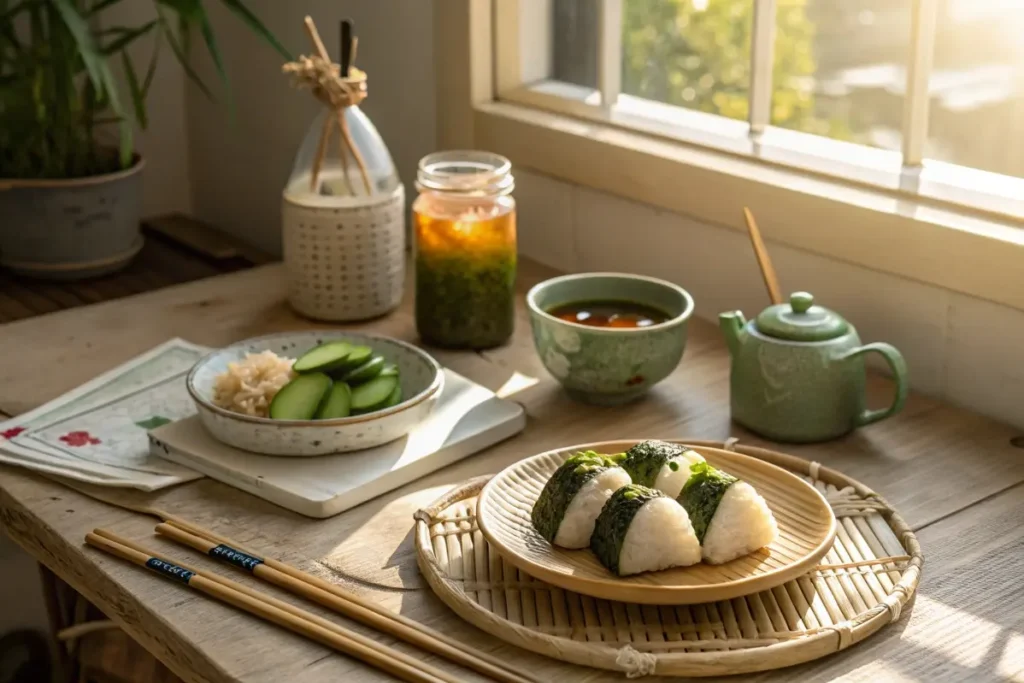
FAQs About Japanese Breakfast
Below are some of the most frequently asked questions, sourced from popular “People Also Ask” queries on Google. These answers will help demystify the idea of what do Japanese eat for breakfast and guide you toward trying it yourself.
- What is a typical Japanese breakfast?
A typical Japanese breakfast generally consists of steamed rice, miso soup, and a side of protein such as grilled fish or tamagoyaki. Pickled vegetables and fermented foods like natto often appear as well, contributing to both flavor and nutritional balance. - Do Japanese people eat eggs for breakfast?
Yes, eggs are a common breakfast protein. The most iconic preparation is tamagoyaki, a sweet and savory rolled omelet. However, scrambled eggs, fried eggs, and egg salad sandwiches also appear in modern Japanese mornings. - What do Japanese drink for breakfast?
Green tea is the traditional choice, offering a subtle, earthy taste that pairs well with savory dishes. Nevertheless, coffee has gained popularity in recent decades, especially in urban areas. Some households also enjoy hojicha (roasted green tea) or barley tea. - Why is Japanese breakfast so healthy?
Japanese breakfasts feature a balanced mix of carbohydrates, proteins, and micronutrients. Fermented foods like miso and pickles support gut health, while portion control discourages overeating. The emphasis on fresh, seasonal ingredients further contributes to overall health benefits. - Can I customize a Japanese breakfast for dietary restrictions?
Absolutely. For vegetarian or vegan options, skip the fish and use tofu or natto as your protein source. If gluten is a concern, check miso paste labels to ensure they’re gluten-free, and use tamari instead of soy sauce. - Is it hard to make a Japanese breakfast at home?
Not necessarily. Basic dishes like steamed rice and miso soup are straightforward once you learn key techniques. Advanced items like tamagoyaki or grilling fish take practice, but many beginner-friendly recipes are available for easy home cooking. - Can I use regular tableware instead of Japanese bowls and plates?
Of course. While traditional bowls and chopsticks enhance the cultural experience, you can simply use what you have on hand. Focus on the freshness and balance of your meal.
Conclusion
In summary, what do Japanese eat for breakfast is far more than just a simple meal. It’s a comprehensive experience that melds culture, history, and nutrition into one flavorful package. From comforting bowls of miso soup to the variety of side dishes that cater to diverse tastes, a typical Japanese breakfast stands out for its balance and mindfulness.
Whether you’re drawn to the traditional trio of rice, soup, and pickles or intrigued by modern fusion twists, there’s something for everyone in the world of Japanese breakfast. Consider adding a dash of green tea, some seasonal vegetables, or even a classic tamago (egg) dish to your routine. You’ll soon discover why many people around the world are integrating elements of this cuisine into their mornings.
If you’d like to dig deeper into all things Japanese cuisine, we invite you to Explore Advanced Japanese Breakfast Techniques and expand your repertoire. Let the art of mindful eating guide you toward starting each day with gratitude and delicious nourishment.
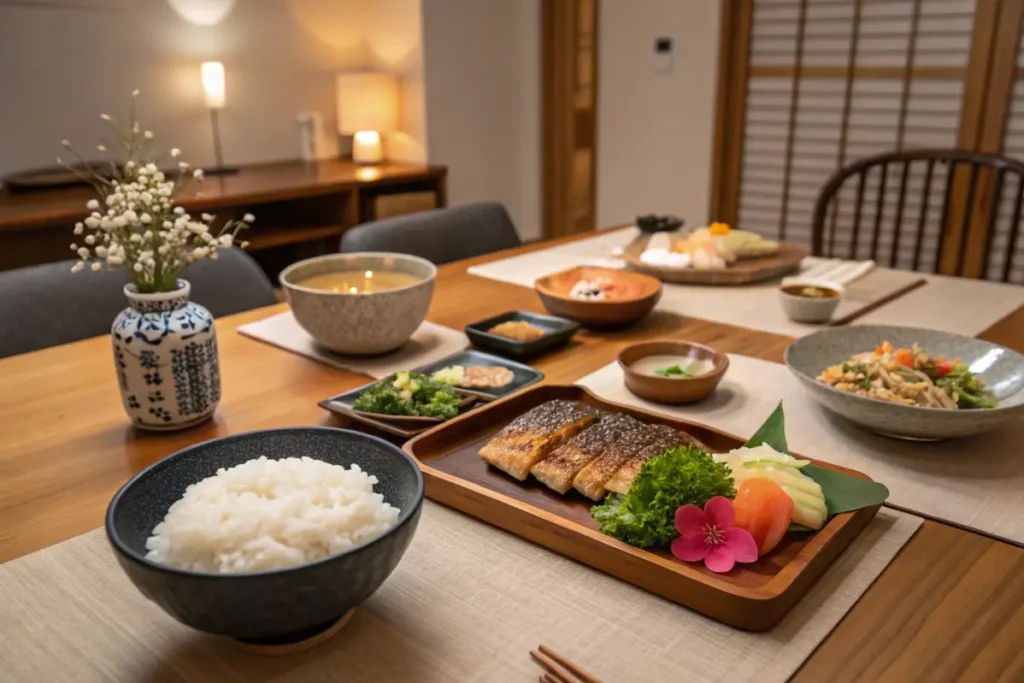
Japanese-Style Fluffy Pancakes
